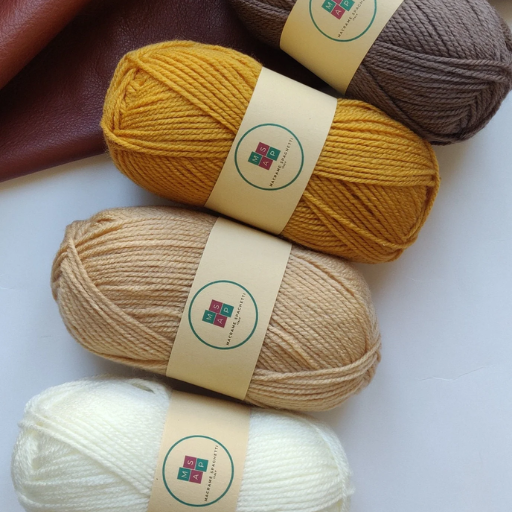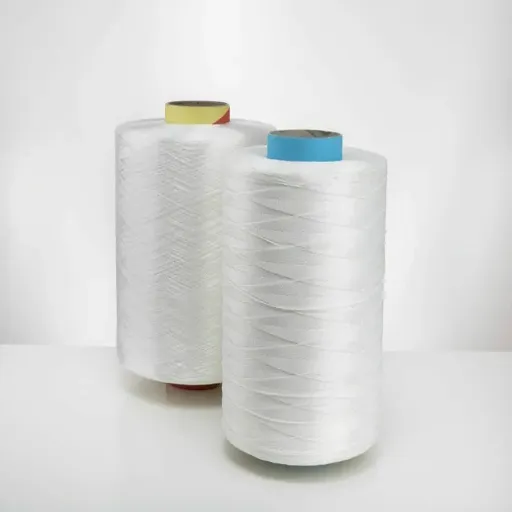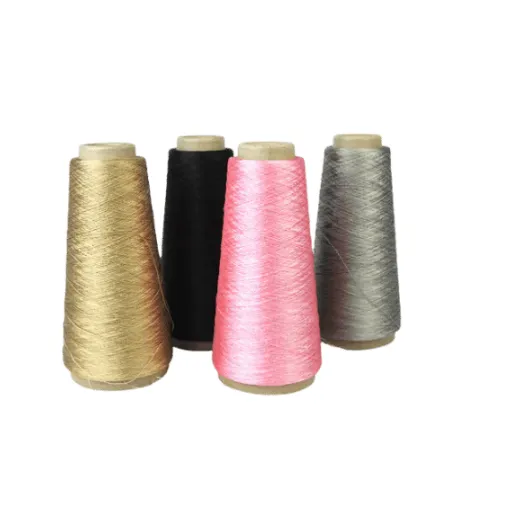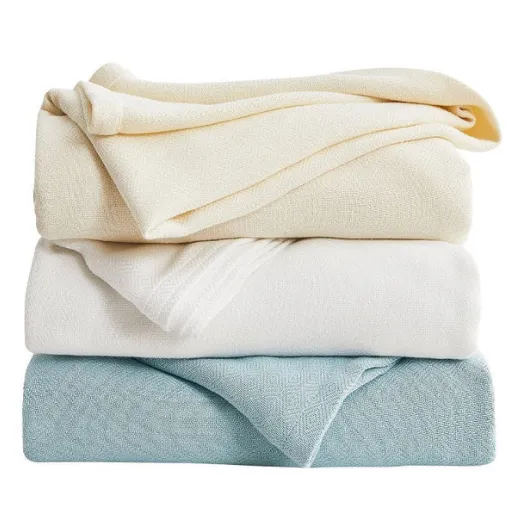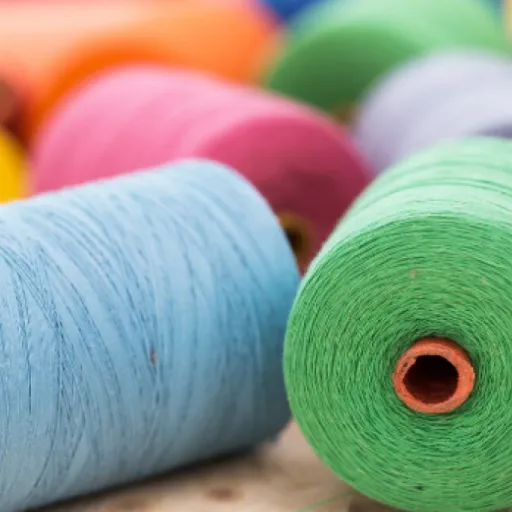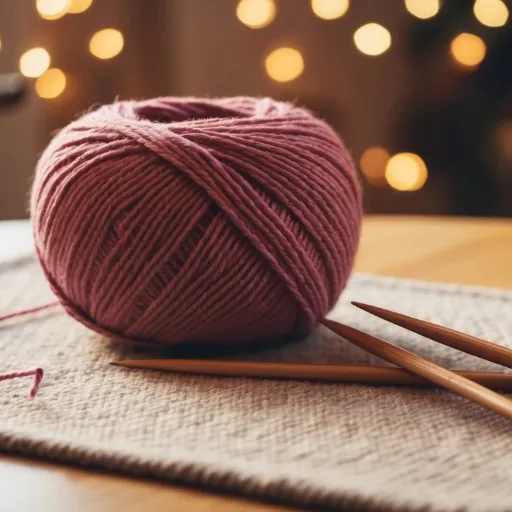Imagine you’re out shopping for a new jacket or sprucing up your living room with new cushions. Two names you’ll almost certainly run into are acrylic and polyester. On the surface, they both seem to check the same boxes: they’re synthetic, presumably more affordable, and come with their own set of advantages. However, in reality, proper strength, feel, or weatherproofing tells a very different story, which can be achieved with the right fabric. Reminding yourself of the differences between polyester and acrylic goes a long way in reaping the benefits of either. This article will cover what sets these materials apart, their signature features, and the considerations that go into choosing the right material for your project. By the end, deciding which material fabric suits your needs will be an easy call.
Understanding Acrylic and Polyester Fabrics
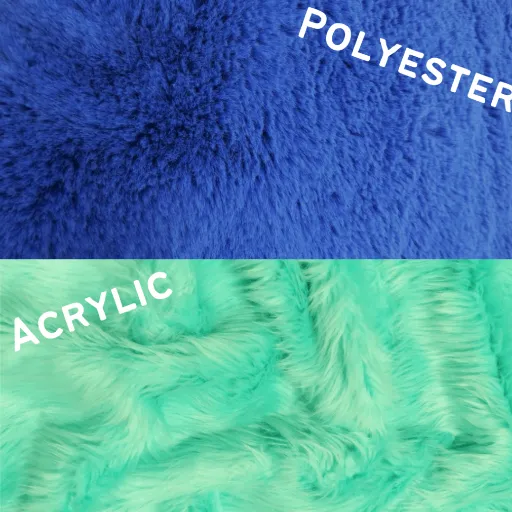
Polyester and acrylic are synthetic fabrics with distinct properties. For example, acrylic fabric is lightweight and soft to the touch, and outdoor fabrics, such as those for canopies and awnings, are often chosen specifically for their ability to imitate wool. Polyester, in comparison, is quick to dry, durable, and resistant to wrinkles, making it suitable for a wide range of apparel and even home furnishings. Ensure that you consider the required feel of the fabric, its durability, and the conditions it will be subjected to when comparing these two fabrics, so that the right one can be selected.
Composition and Properties
Acrylic and polyester vary in their chemical and physical properties. Polyester is a synthetic material primarily composed of ester functional groups and produced from petroleum products. Due to these groups, polyester has high durability and limited stretching or shrinking. Polyester’s functional properties appear to contrast with acrylic’s physical makeup, as the latter is produced from polyacrylonitrile, giving it a wool-like feel. This makes acrylic pleasant to wear and warm to soft clothing.
In terms of usage, polyester outperforms in aspects such as moisture-wicking, strength, and color retention, which allows it to be used in active and high-use clothing. While sweaters, scarves, and gloves are made of acrylic, assuming it is used for warm clothing, it surpasses polyester in softness and insulation, but falls short in this regard. The properties of a material determine the range for which such a material can serve in an aesthetic sense, and such a choice must satisfy the intended need of the product.
Texture and Feel
While evaluating different fabrics, one that stands out the most is polyester compared to acrylic. This is due to the contrasting materials of the fabrics having quite different characteristics. The unique polyester fabric is generally mishandled, but it has a distinct texture of its own that is smooth and slightly slick. It is worth mentioning that it is also breathability-enhancing when it is loosely woven. With advancements in fabric technology, the softness and comfort of polyester have been significantly enhanced. In addition, acrylic is known for its plush, wool-like finish, which makes it a favorite for both warm-weather and chilly-season clothing. The deciding factors between these two fabrics are often the desired outcome, as their functions vary greatly to accommodate different needs, with each having a unique feel.
Durability and Wear
Fabrics made from polyester are known to be durable and especially useful over the course of repeated washing cycles. Wear and tear is far less damaging than with other fabrics. Like polyester, synthetic fibers do not stretch, shrink, or wrinkle. Such fabrics are best suited for long-term use and are easy to maintain. Compared to polyester, acrylic fibers are less robust when subjected to high levels of wear, tear, and frequent washing cycles. Pilling of the acrylic fibers can occur over time, which would deteriorate the look and feel of the fabric. Polyester tends to have greater wear resistance for items that are frequently used, whereas acrylic is known for its warmth and softness, which is ideal for seasonal and infrequent use.
Common Uses of Acrylic and Polyester Fabrics
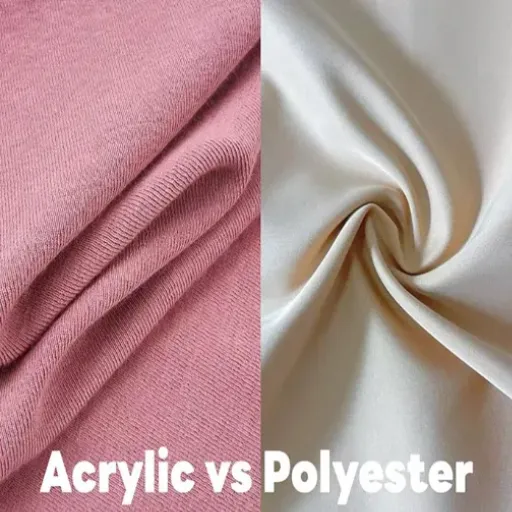
| Fabric Type | Primary Applications | Key Benefits |
|---|---|---|
| Acrylic | Sweaters, scarves, gloves, blankets, upholstery | Warmth, softness, wool-like feel |
| Polyester | Sportswear, outerwear, casual wear, curtains, bed linen, cushion covers, ropes, conveyor belts | Durability, wrinkle resistance, moisture-wicking |
Applications in Clothing
Fabrics such as cotton, wool, silk, and polyester continue to dominate the apparel industry due to their unique properties. For instance, cotton is renowned for its breathability and comfort, as it is widely used in casual summer clothing, such as t-shirts and lightweight dresses. Wool is indispensable for winter clothing such as coats, sweaters, and scarves due to the protection it provides. With its satin luxury glow, silk is widely used in luxury clothing such as evening gowns and ties. Activewear and business wear are the primary applications of polyester, thanks to its moisture-wicking properties and resistance to creases. There also appears to be a surge in interest in recycled fabrics, which seems to align with the growing demand for sustainable fashion.
Home Textile Uses
From personal experience, the various uses of home textiles include both necessary and aesthetic ones. As a testament to their comfort and breathability, I use cotton and linen for my bed linens and curtains. I also use polyester blends for my rugs and upholstery as they strike a good balance between durability and ease of maintenance. In line with my intention of creating an eco-friendly home environment, I am increasingly prioritizing the use of sustainable materials.
Outdoor and Industrial Applications
Outdoor and industrial textiles must perform effectively under diverse environmental conditions. They should be functional yet durable. For example, outdoor furniture uses materials like acrylic and polyester for awnings, coverings, and even for the furniture itself. These materials are ideal because of their water repellency and UV resistance. On the other hand, in industrial settings, textiles play a crucial role in various stages of production. They range from conveyor belts with special fabrics to geotextiles used in construction for soil reinforcement. The continued development of technical textiles, such as those with special coatings or new-age fibers, enables them to meet new criteria, including fire resistance and increased tensile strength. These developments cater to both everyday ease and industrial productivity on a larger scale.
Benefits and Drawbacks of Acrylic and Polyester
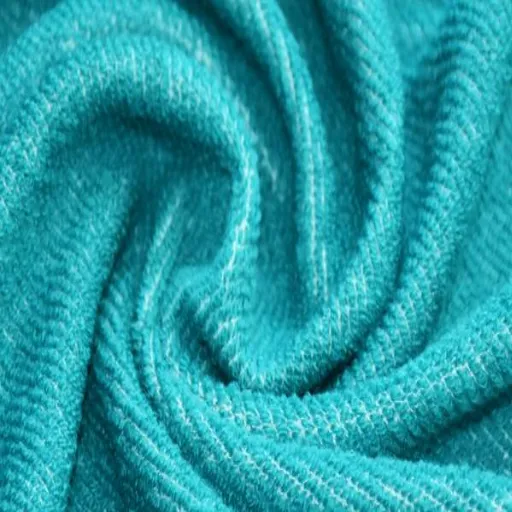
Acrylic Fabric
Benefits:
- Lightweight and soft, making it a suitable alternative to wool.
- Resistant to sunlight and weather, ideal for outdoor use.
- Affordable and widely available.
Drawbacks:
- Less breathable than natural fibers, which can lead to discomfort in warm conditions.
- Prone to pilling and may lose shape over time.
- Not environmentally friendly due to its synthetic nature.
Polyester Fabric
Benefits:
- Durable and resistant to wrinkles, shrinking, and stretching.
- Quick-drying and moisture-wicking, suitable for activewear.
- Cost-effective and easy to care for.
Drawbacks:
- Less breathable, potentially causing discomfort.
- Retains odors and may require frequent washing.
- Synthetic production raises environmental concerns, including the pollution of microplastics.
Advantages of Acrylic Fabrics
The textile industry has adopted acrylic fabrics due to their numerous advantages. Being lightweight is a significant benefit, as it contributes to ease of handling and wearing. Such fabrics also endure quite a lot. They are crease-resistant, which plays a vital role in maintaining the fabric’s appearance over time. Acrylic fabric stands out in the textile industry due to its exceptional color retention. The color lasts long and remains vivid even after multiple washes. Such fabrics are not limited in functionality and can imitate natural fabrics like wool, offering a more affordable and aesthetically pleasing alternative. Additionally, acrylic fabrics do not support the growth of mildew or moths and can resist certain chemicals, making them a dependable and hassle-free option for various uses.
Drawbacks of Acrylic Fabrics
Of course, acrylic materials have benefits, but these issues need to be taken into consideration. The most significant one is a lack of breathability, which can make it uncomfortable to wear in hot and damp conditions. Additionally, because acrylic is synthetically produced, its production and non-biodegradability pose environmental concerns. With prolonged use, especially in high-friction areas, acrylic materials may also develop pilling, which can make them appear worn out. These materials can also hold static charge and may be more likely to collect lint and pet fur. To add to this, in comparison to natural fabrics, acrylic materials are significantly more flammable, which can pose a safety risk in specific applications. Their knowledge of drawbacks provides the necessary context for making informed decisions about their use.
Pros and Cons of Polyester Fabrics
Polyester is well-known for its numerous applications. One of its significant benefits is durability. As far as clothing and home furnishings are concerned, quick-drying and mildew resistance make polyester an ideal choice for outdoor apparel. Furthermore, the fabric is wrinkle-resistant, stretch-resistant, and lightweight, while retaining its color, and is relatively inexpensive, especially when compared to natural fibers.
Polyester is less environmentally friendly, as it is derived from petroleum and is non-biodegradable, contributing to plastic pollution. In hot or humid conditions, polyester clothing can be less comfortable, as the fabrics tend to be less breathable. Polyester tends to be less soft and more abrasive to the skin compared to cotton, which is a natural fabric. A comprehensive understanding of the gains and losses is essential when determining the suitability of polyester for a specific purpose.
Environmental Impact of Acrylic and Polyester
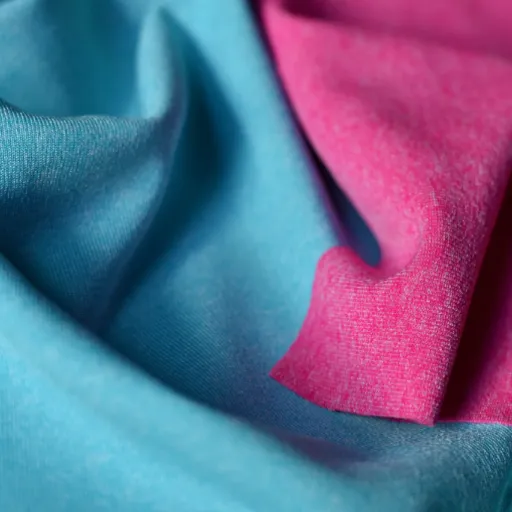
Environmental Concern: The environmental implications of both polyester and acrylic are severe, primarily due to their synthetic compositions and reliance on fossil fuels. The production of acrylic is particularly concerning due to the toxic chemicals involved, which pose a risk to local ecosystems if not appropriately contained. At the same time, polyester production is equally related to its high greenhouse gas emissions and the significant energy consumption of the production process. Moreover, the fact that these materials aren’t biodegradable only adds to their environmental concerns, as the waste persists in landfills for years. Additionally, they shed microplastics when washed, which exacerbates water pollution and poses a threat to aquatic animals. Striving to use fewer of these materials, improving recycling techniques, and opting for other sustainable alternatives are steps that can help mitigate the damage.
Production and Sustainability Issues
Viewed in the context of recent data, the issues of producing cotton and polyester fabrics appear more pronounced than before. The cultivation of cotton necessitates the use of water on a grand scale. The cotton industry is likely to use between 10,000 and 20,000 liters of water to produce one kilogram of cotton. This leads to an increase in water scarcity in areas already affected by this phenomenon; furthermore, the use of fossil fuels in the manufacture of polyester results in carbon emissions. Recent studies have highlighted the fact that polyester fabrics account for more than 50% of global fiber production, leading to the emission of a substantial amount of greenhouse gases. To ensure that the fashion industry behaves more responsibly towards the environment, adopting advanced recycling and sustainable fiber alternatives, such as hemp or recycled textiles, along with renewable energy in production facilities, should be considered necessary steps.
Microplastic Pollution Concerns
Human-made microfibers have become a glaring microplastic issue—detected in our seas, rivers, soil, and even in the air we breathe. Among other sources, recent data indicate that textile fibers, such as nylon and polyester, are notable. These man-made fabrics release minute plastic pieces as they undergo the washing process. Implementing better wastewater filters, creating less-shedding fabrics, and promoting consumer practices such as infrequent washing or the use of specialized microfiber-collecting laundry bags are practical steps to address this problem. Such small steps, if multiplied and coordinated, will surely help alleviate the microplastic issue, thereby safeguarding life on earth for an extended period.
Recycling and Eco-Friendly Alternatives
Recycling plays a crucial role in curbing waste generation and protecting natural resources. Recycling plastics, metals, and paper not only conserves virgin materials but also reduces landfill usage. This practice has a positive impact on reducing waste. The growing concern for environmentally friendly products is evident from the search statistics — both “sustainable packaging” and “biodegradable products” have been on the rise. Switching to bamboo, glass, and even compostable plastic products benefits consumers’ eco-friendly choices and the circular economy. For the greater good, both individuals and companies must focus on reducing purchases, reusing, and recycling materials effectively.
Recent Innovations in Acrylic and Polyester Fabrics
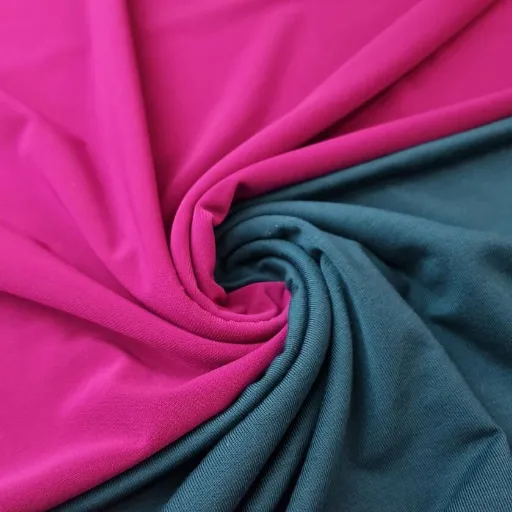
There is a growing focus on enhanced functionality and sustainability in fabrics, Particularly Polyester and acrylic fabrics. Recycled polyesters, commonly used in the textile industry, are made from used plastic bottles, helping to reduce waste and minimize the need for new raw materials. The same can be said for the development of new bio-based acrylic fibers, which utilize renewable materials to reduce their carbon footprint. Treatments that cater to both functionality and ecology, such as those offering durability, moisture-wicking properties, and UV resistance, are also part of the innovations. Such innovations demonstrate the fabric industry’s efforts in developing superior, environmentally friendly fabrics for various uses.
Advancements in Acrylic Production
New methods of making acrylic now have the same innovative spirit, but with a heightened concern for sustainability. Today’s methods are particularly focused on energy efficiency and the use of recyclable materials. With newer, more thoughtful methods in chemical engineering, the development of production methods that emit fewer harmful pollutants is now a realistic goal. Furthermore, enhancing methods to incorporate circular economy principles by attempting to recycle acrylic products at the end of their useful life is now being explored. All these efforts ensure that the fabrication of acrylic evolves in line with global sustainability objectives, without compromising the quality and versatility of the materials.
Sustainable Practices in Polyester Manufacturing
The starting materials of the polyester industry have made great efforts to adopt an eco-friendly approach. One of the revolutionary changes is the implementation of recycled polyester. This is extracted from bottles that are no longer in use. This not only helps in recycling plastic waste but also helps reduce dependence on new petroleum-based materials. In addition to this, there is also an ongoing effort to enhance dyeing methods, including waterless and digital dyeing, which help reduce water and chemical consumption during production. The use of newer, energy-efficient equipment and the integration of renewable energy into production plants also help reduce greenhouse gas emissions. The polyester sector is meeting the demands for sustainable material production by catering to recycling, low material usage, and low-impact processes.
Frequently Asked Questions (FAQs)
Reference Sources
Here are five masterly professional reference sources any person may use to validate the accuracy of his or her “acrylic fabric vs. polyester” article:
In this study, MDPI highlights the progress made on acrylic fabrics and contrasts it with other materials, such as polyesters, which further enriches the discourse on fabric evolution.
This study compares the environmental implications of different textile materials, including acrylics and polyester, as viewed through a life cycle assessment (LCA) published by Springer.
The study of synthetic materials, including the acrylic and polyester types, is the focus of this research. The materials are to be tested in differing and varying environments.
This paper on acrylics and polyesters focuses on the regulatory and authoritative guidelines that govern both synthetic and natural fibers.
The title’s accessible on Google Books. Available for preview, the publication synthesizes information on the properties and applications of synthetic fibers, including acrylic and polyester fibers, across various industries.












